Welcome to the breathtaking world of Zion National Park, Utah’s first national park and a true gem of the American Southwest. With its towering sandstone cliffs, magnificent canyons, and Zion’s unique array of flora and fauna, Zion offers a unique and awe-inspiring experience for visitors of all ages and interests. This comprehensive guide will take you on a journey through the park’s rich history, highlight its most popular attractions and activities, and provide insider tips to make the most of your visit. So let’s embark on this adventure together and discover the wonders of Zion National Park!
A Brief History of Zion National Park
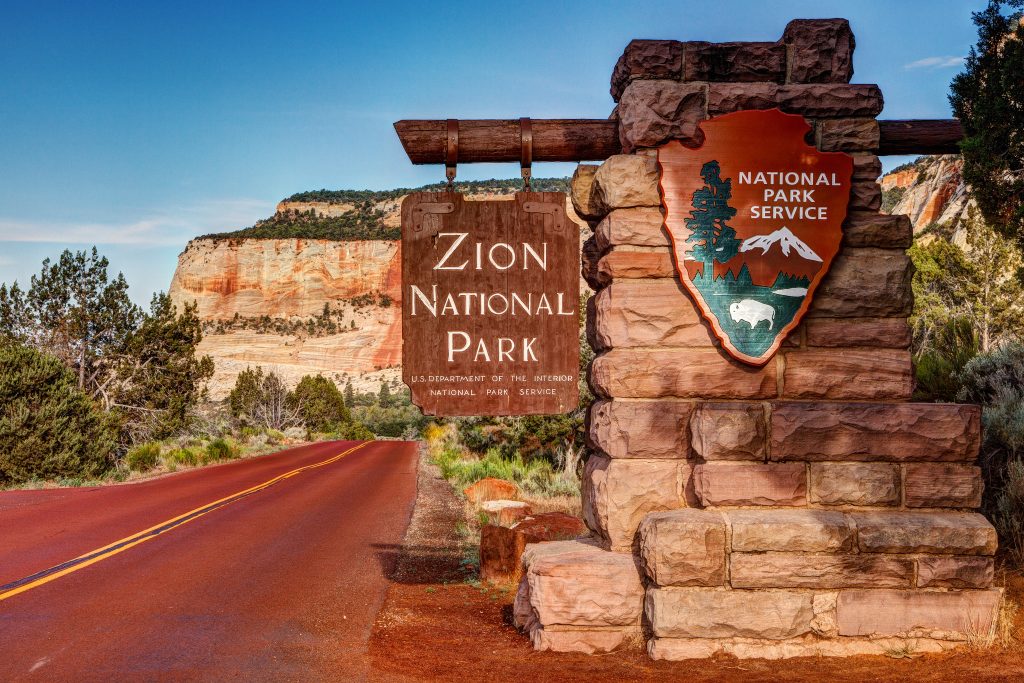
Zion National Park has a rich and fascinating history that dates back thousands of years. Native American tribes, including the semi-nomadic Basketmaker Ancestral Puebloans and the Virgin Anasazi culture, first inhabited the area. Midway through the 19th century, Mormon pioneers settled the area, giving it the Hebrew name Zion, which means “a place of peace and refuge.”
In 1909, President William Howard Taft designated the area as Mukuntuweap National Monument to protect its unique natural beauty. However, it wasn’t until 1919 that Congress officially designated the monument as a national park. Since then, the park has attracted millions of visitors from around the world, who come to witness its awe-inspiring landscapes and experience the thrill of outdoor adventures.
Getting to Zion National Park
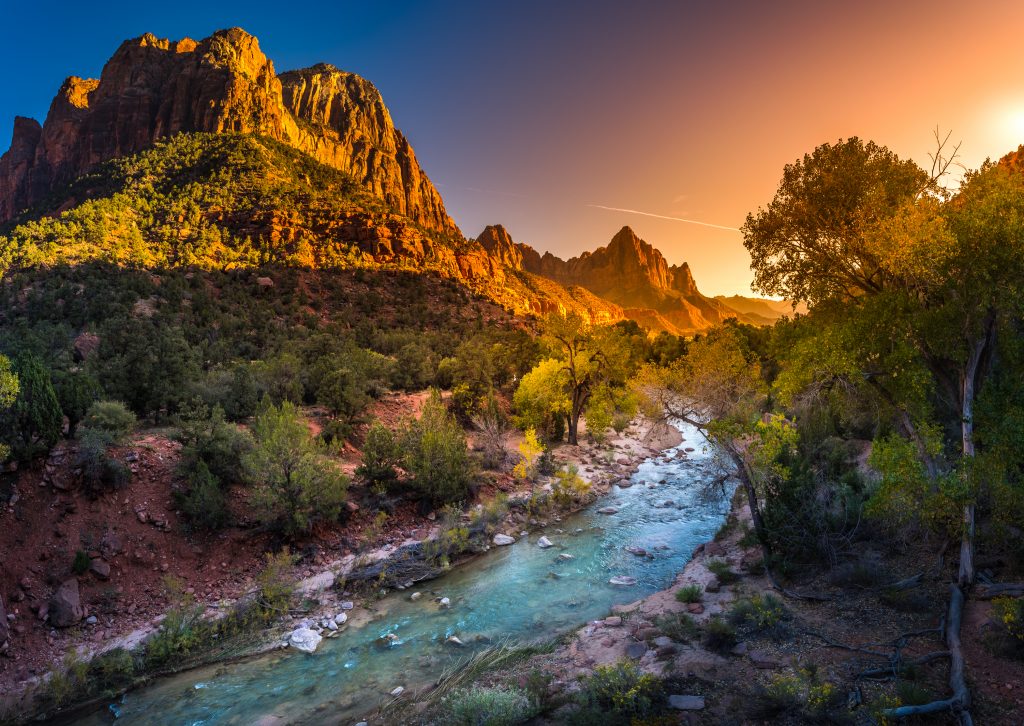
Zion National Park is conveniently located in southwestern Utah, making it easily accessible from various major cities and attractions. The closest major airport is McCarran International Airport in Las Vegas, which is approximately a three-hour drive away. Alternatively, you can fly into Salt Lake City International Airport and enjoy a scenic five-hour drive to the park. For a more regional option, St. George Regional Airport is just an hour away from Zion and offers flights from major cities.
To enter the park, you can take State Route 9 or Interstate 15, both of which provide direct access to Zion. It’s important to note that private vehicles are not allowed on Zion Canyon Scenic Drive, the main road through the park, when the Zion Canyon Shuttle is running. However, you can drive on Highway 9 through the southern portion of the park from Mount Carmel Junction to Springdale. Parking can be limited, especially during peak seasons, so it’s advisable to arrive early or consider taking advantage of the park’s shuttle system.
Exploring Zion’s Unique Landscapes
One of the most striking features of Zion National Park is its dramatic and diverse landscapes. The park is characterized by its massive sandstone cliffs of cream, pink, and red hues, carved by the forces of wind and water over millions of years. Within the park, you’ll find several distinct regions, each offering its own unique beauty and outdoor opportunities.
Zion Canyon
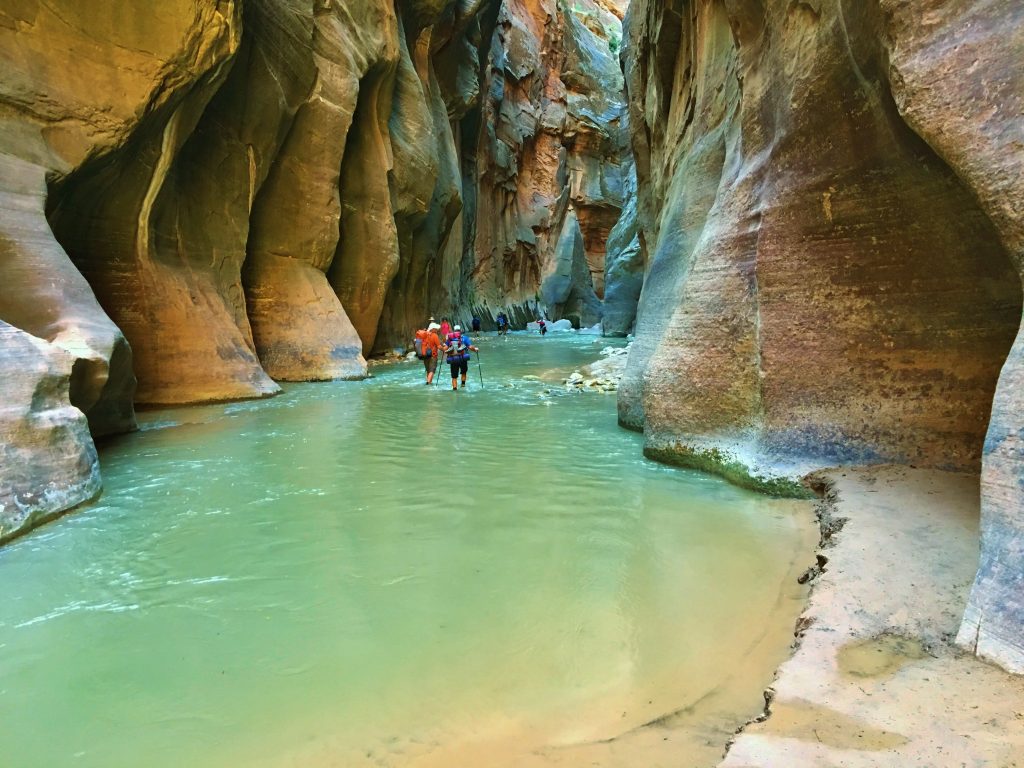
The Narrows
At the heart of the park lies Zion Canyon, a magnificent gorge carved by the North Fork of the Virgin River. With towering cliffs and stunning rock formations all around it, this well-known canyon stretches for 15 miles and can reach depths of up to 2,640 feet. It is here that you’ll find many of the park’s most famous attractions, including Angels Landing, The Narrows, and Weeping Rock.
- Angels Landing: One of Zion’s most thrilling hikes, Angels Landing offers a challenging but rewarding adventure for experienced hikers. The trail takes you along a narrow ridge with steep drop-offs, culminating in breathtaking panoramic views of the surrounding canyon.
- The Narrows: For a truly unique hiking experience, venture into The Narrows, a narrow slot canyon carved by the Virgin River. This hike involves wading through the river and offers a magical journey surrounded by towering sandstone walls and stunning reflections in the water.
- Weeping Rock: A short and easy hike leads to Weeping Rock, a natural alcove where water seeps through the rock, creating a mesmerizing curtain of water. This is a great spot to cool off on a hot day and marvel at the power of nature.
- Temple of Sinawava: is a stunning natural amphitheater surrounded by towering sandstone cliffs. Revered for its majestic beauty, this sacred spot marks the end of the scenic Zion Canyon Scenic Drive and the starting point of the Riverside Walk trail.
Kolob Canyons
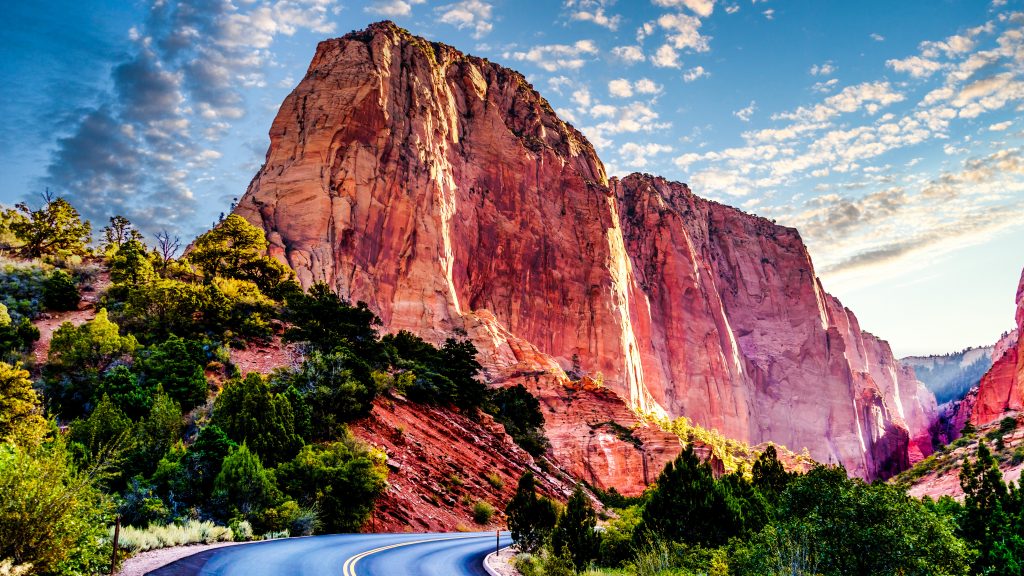
Located in the northwest corner of the park, the Kolob Canyons region offers a quieter and less crowded experience compared to Zion Canyon. Here, you’ll find a series of stunning red rock canyons, towering cliffs, and panoramic vistas. The Kolob Canyons Road provides access to several scenic viewpoints and trailheads, including the famous Kolob Arch.
- Kolob Arch: Considered one of the world’s largest natural arches, Kolob Arch is a breathtaking sight to behold. While reaching the arch requires a challenging hike, the reward is well worth the effort as you stand in awe of this natural wonder.
East Side of the Park
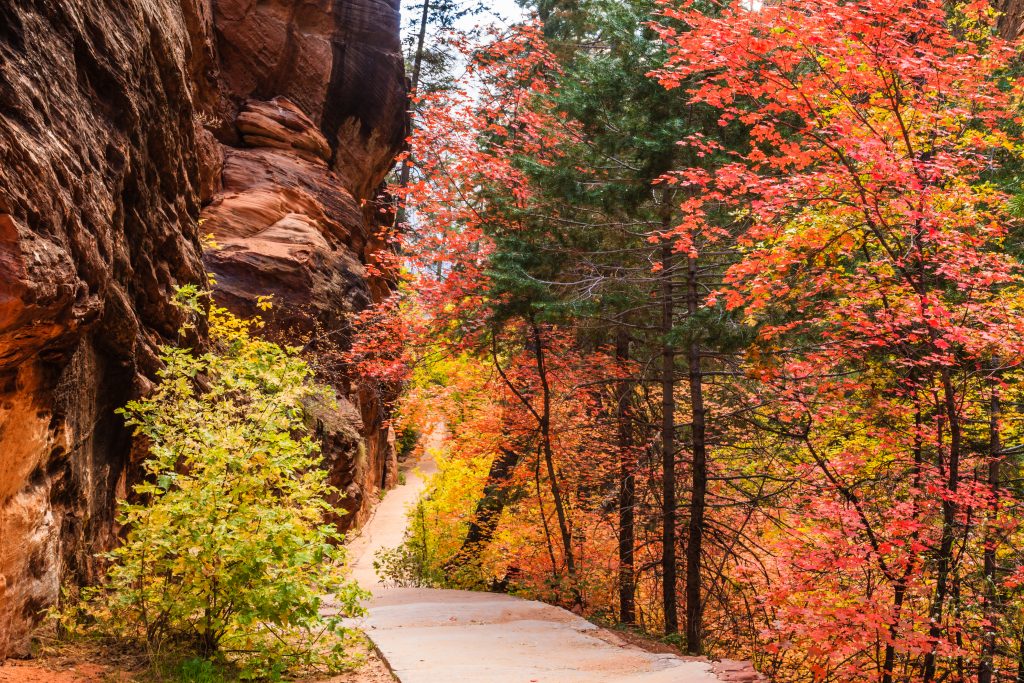
The east side of Zion National Park is often referred to as the quiet side, offering a more serene and less crowded experience. This region provides closer access to other nearby national parks, including Bryce Canyon National Park, Capital Reef National Park, Cedar Breaks National Monument, and the North Rim of the Grand Canyon.
- Scenic Drives: The distinctive red asphalt of the Zion-Mount Carmel Highway leads through a narrow 1.1-mile tunnel, providing access to lesser-known hikes and scenic viewpoints near the East Entrance. This area is perfect for leisurely drives, with opportunities to admire the stunning vistas and geological wonders.
- Canyoneering: The east side of the park is also known for its canyoneering opportunities, offering thrilling adventures for those seeking an adrenaline rush. Guided canyoneering tours are available for those looking to explore the narrow slot canyons and rappel down towering cliffs.
Outdoor Activities in Zion National Park
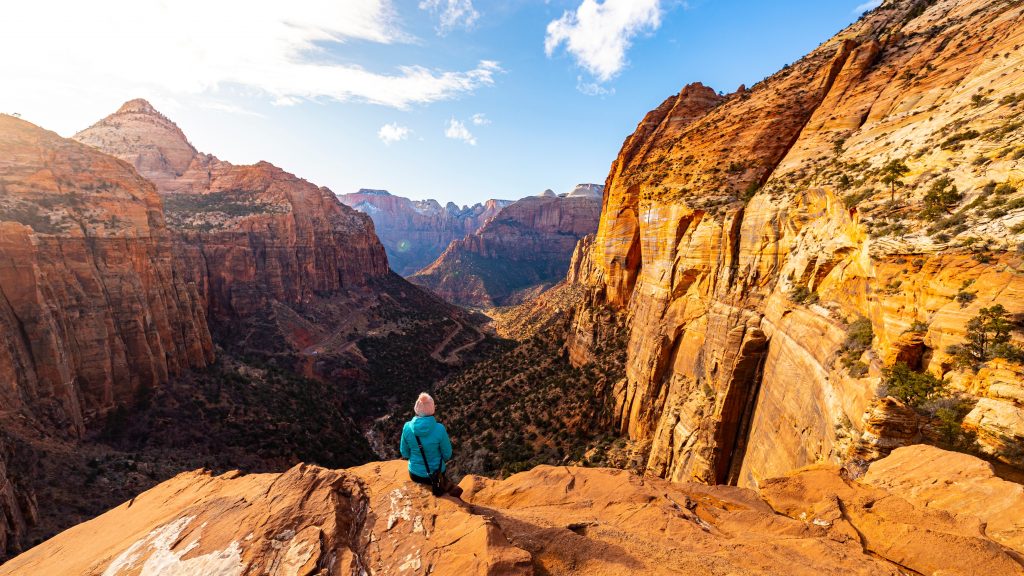
Zion National Park is a paradise for outdoor enthusiasts, offering a wide range of activities to suit every interest and skill level. From hiking and camping to rock climbing and wildlife spotting, there’s something for everyone to enjoy in this natural wonderland.
Hiking
With over 100 miles of trails, Zion National Park is a hiker’s paradise. Whether you’re a seasoned trekker or a beginner looking for an easy stroll, there are hikes to suit every level of fitness and adventure. Here are some of the best hikes in Zion:
TOP 15 BEST HIKES IN THE US
- Observation Point: This challenging hike rewards you with breathtaking panoramic views of Zion Canyon and the surrounding landscapes. The trail takes you to the iconic summit of Observation Point, offering a unique perspective of the park.
- Emerald Pools: A series of desert oases separated by lush vegetation, waterfalls, and red rock monoliths, the Emerald Pools offer a refreshing and picturesque hike for visitors of all ages. The trip to the first pool is quick and easy, making it a great option for families and those seeking a shorter adventure.
- Hidden Canyon: For a thrilling and adventurous hike, venture into Hidden Canyon. This narrow slot canyon requires some scrambling and offers stunning views along the way. It’s a great option for those looking to experience the excitement of canyoneering without the need for technical gear.
Explore Trails with AllTrails.com
Camping
Immersing yourself in the wilderness of Zion National Park is an unforgettable experience. The park offers several campgrounds where you can spend the night under the stars, surrounded by the beauty of nature. Here are some camping options in Zion:
- South Campground: Located near the park’s south entrance, South Campground offers a picturesque setting with convenient access to hiking trails and amenities. It features both individual and group campsites, and reservations can be made in advance.
- Watchman Campground: Situated near the Zion Canyon Visitor Center, Watchman Campground is a popular choice for campers looking to stay closer to the main attractions. It offers both individual and group sites, and reservations are recommended, especially during peak seasons.
TOP 20 CAMPING SPOTS FOR AN UNFORGETTABLE OUTDOOR ADVENTURE
Rock Climbing

Zion National Park is a paradise for rock climbers, with its towering sandstone walls providing endless opportunities for thrilling ascents. However, it’s important to note that rock climbing in Zion requires technical skills and experience. Here are a few popular climbing routes in the park:
- Moonlight Buttress: Considered one of the classic climbs in Zion, Moonlight Buttress offers a challenging and rewarding experience for experienced climbers. This multi-pitch route takes you up a striking sandstone formation, with breathtaking views along the way.
- Prodigal Son: For those seeking a more adventurous climb, Prodigal Son offers a unique and exposed route on the East Temple formation. This climb requires advanced skills and the use of traditional protection.
Wildlife Spotting
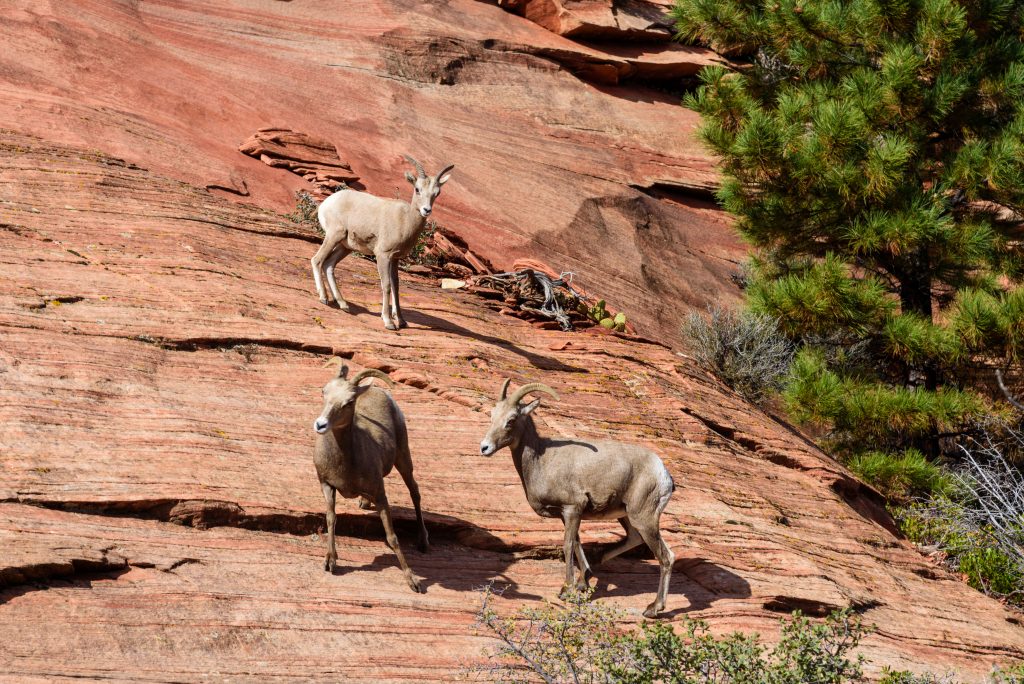
Zion National Park is home to a diverse array of wildlife, making it a perfect destination for wildlife enthusiasts and nature photographers. Keep your eyes peeled for some of the park’s iconic animal life residents, including mule deer, peregrine falcons, California condors, and bighorn sheep. Remember to maintain a safe distance and observe wildlife from a respectful distance to ensure their safety and yours.
Best Time to Visit Zion National Park

Zion National Park is a year-round destination, each season offering its own unique charm and experiences. The best time to visit depends on your preferences and the activities you wish to engage in. Here’s a breakdown of what to expect during each season:
- Spring (March to May): Spring brings mild temperatures and blooming wildflowers to Zion. It’s a great time for hiking and enjoying the park’s stunning landscapes. However, spring also brings unpredictable weather, including occasional rain showers and the possibility of flash floods in narrow canyons.
- Summer (June to August): Summer is the peak tourist season in Zion, with warm temperatures and long daylight hours. It’s the perfect time for river activities, such as swimming and tubing, and exploring the park’s higher elevations. Be prepared for hot temperatures and crowded trails, especially in popular areas like Zion Canyon.
- Fall (September to November): Fall is a popular time to visit Zion, with pleasant temperatures and fewer crowds compared to summer. The park’s foliage turns vibrant shades of red, orange, and yellow, creating a stunning backdrop for outdoor activities. Keep in mind that October is a busy time due to Utah schools’ fall break, so plan accordingly.
- Winter (December to February): Winter visitors to Zion can enjoy a serene and peaceful experience, with snow-covered landscapes and fewer tourists. While some trails may be closed or require additional precautions due to winter conditions, there are still plenty of opportunities for hiking, photography, and wildlife spotting. Be prepared for cold temperatures and check for road and trail closures before your visit during the winter months.
Where to Stay Near Zion National Park
When it comes to accommodation near Zion National Park, there are several options to suit every budget and preference. The town of Springdale, located just outside the park’s entrance, offers a range of lodging choices, from luxury resorts to cozy bed and breakfasts. Staying in Springdale provides easy access to the park and a vibrant dining and shopping scene.
If you prefer a quieter and more secluded experience, consider staying in the nearby towns of Hurricane, La Verkin, or Kanab. These towns offer a more laid-back atmosphere and are within a reasonable driving distance from Zion.
For those seeking a more immersive experience, camping in one of the park’s campgrounds is a popular option. Whether you prefer a developed campground with amenities or a more primitive experience in the backcountry, Zion National Park has options to suit your camping needs.
Insider Tips for a Memorable Visit

To make the most of your visit to Zion National Park, here are some insider tips from park rangers and experienced visitors:
- Arrive Early: To beat the crowds and secure parking, aim to arrive early in the day, especially during the peak summer season. This will give you more time to explore the park and enjoy popular trails without the rush.
- Prepare for Weather Changes: Zion’s weather can be unpredictable, so dress in layers and be prepared for sudden temperature changes and rain showers. It’s always a good idea to carry extra water, sun protection, and rain gear.
- Take Advantage of the Shuttle System: During the peak season, private vehicles are not allowed on Zion Canyon Scenic Drive. Instead, utilize the park’s free shuttle system, which provides easy access to popular trailheads and viewpoints. This helps reduce traffic congestion and ensures a smoother experience for everyone.
- Explore Lesser-Known Trails: While popular hikes like Angels Landing and The Narrows are must-see attractions, don’t overlook the lesser-known trails in the park. Hidden Canyon, Observation Point, and Kolob Arch offer equally stunning scenery and fewer crowds.
- Respect Wildlife and Nature: Zion National Park is a protected area, so it’s important to respect its wildlife and natural resources. Keep a safe distance from wildlife, pack out your trash, and stay on designated trails to minimize your impact on the fragile ecosystem.
By following these tips and immersing yourself in the beauty of Zion National Park during the summer months. You’re bound to have a memorable and fulfilling experience that will leave you with a deep appreciation for this natural wonder.
Conclusion
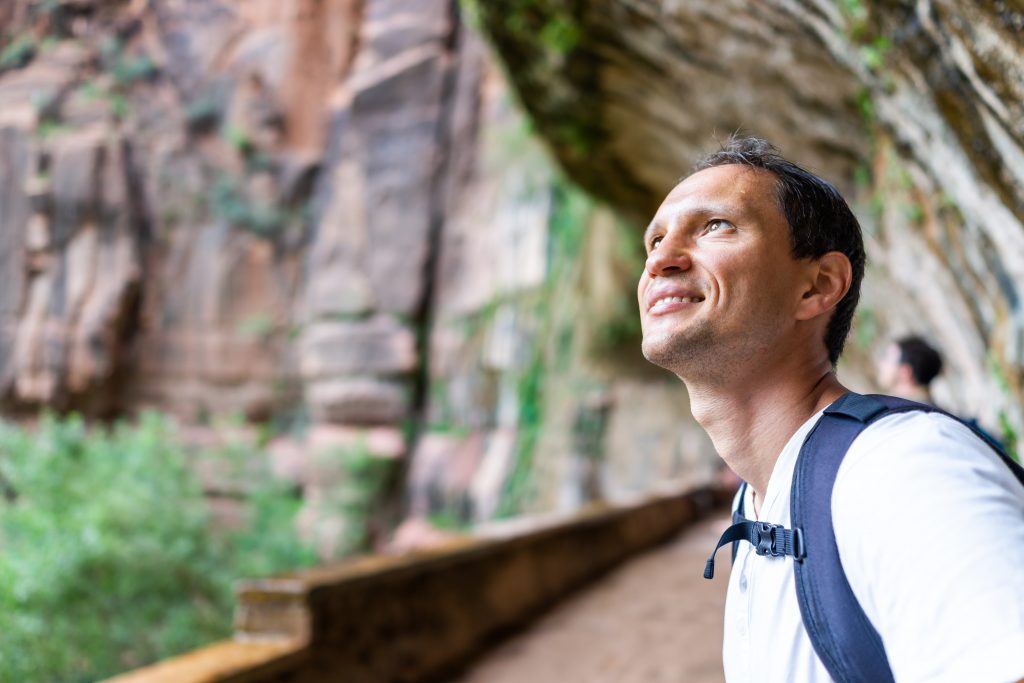
Zion National Park is a true paradise for nature lovers and outdoor enthusiasts. From its towering sandstone cliffs and majestic canyons to its diverse wildlife and thrilling hiking trails, the park offers a unique and awe-inspiring experience for visitors of all ages. By planning your visit wisely, respecting the park’s rules and regulations, and immersing yourself in its natural beauty, you’ll create memories that will last a lifetime. So pack your bags, lace up your hiking boots, and get ready to explore the wonders of Zion National Park!
